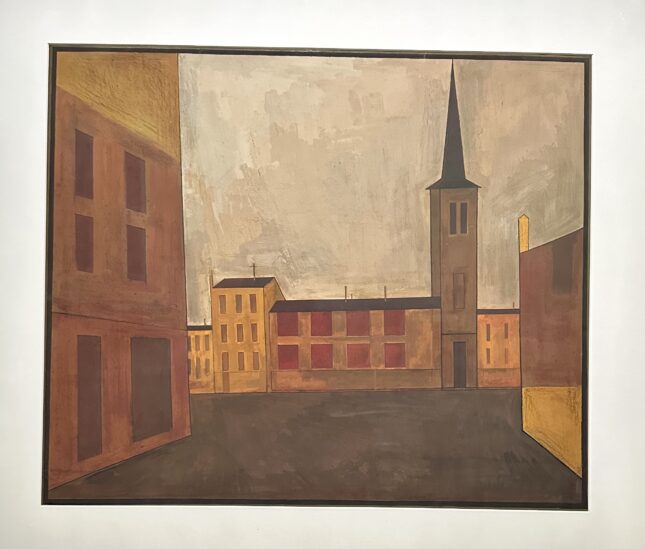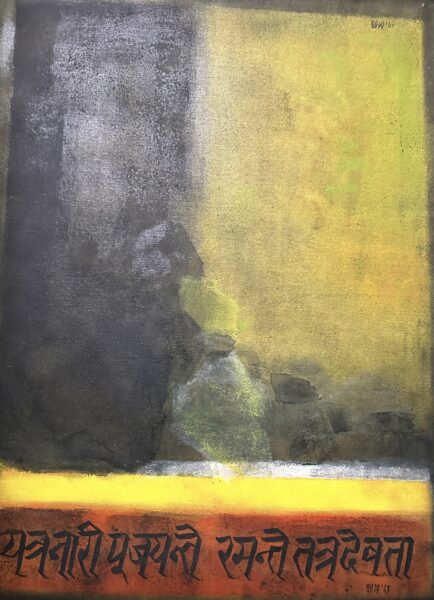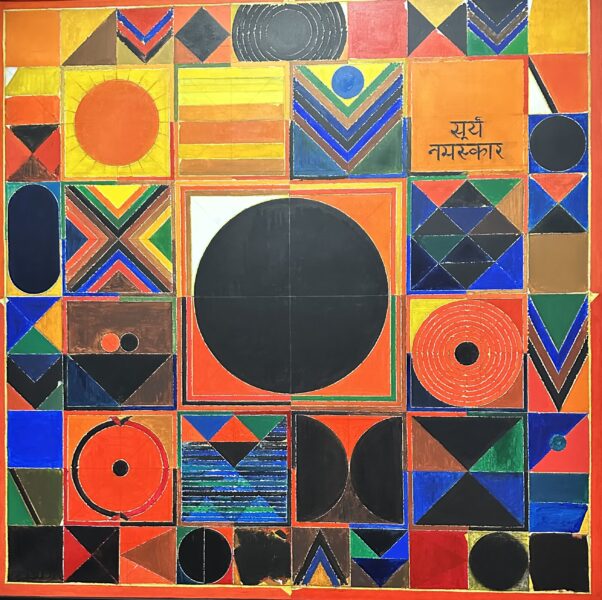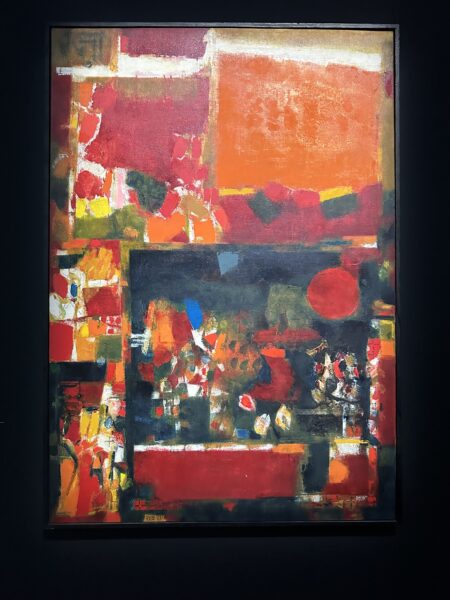Centre of the art World

For a long while it was Europe, then the United States, that were at the centre of the art world’s preoccupations in terms of modern artistic creation. But gradually, spurred on by new, less self-centred notions, and – it must be said – by the art market, the horizons of museums have broadened to include the Middle East, China, Africa, and India too. In this spirit the Centre Pompidou, clearly following a diplomatic agreement, is staging until 15 May the largest exhibition ever dedicated to one of the pillars of Indian modern art, Sayed Haider Raza (1922-2016).
No catalogue

It is regrettable, however, that this is not accompanied by a catalogue. Together with M.F. Husain and F.N. Souza, the trio participated in the founding of a movement in Bombay in 1947 that would revolutionize local artistic expression, accommodating Indian culture and Western painting.
Ripe for abstraction

“This idea that the vital aspect of painting resides in the sense of the form, seduced all of us,” said Sayed Haider Raza. The painter was ripe for abstraction. It took him a few more years to get there. He came to Paris in 1950 thanks to a grant from the French government and stayed there until 2010, only deciding to leave for good after the death of his wife, the French painter Janine Mongillat (1930-2002).
Catherine David
As shown in the Pompidou exhibition, featuring 90 artworks, he expresses himself primarily through highly geometric urban landscapes. It must be said that at the start of the exhibition, the poor quality of the framing doesn’t showcase this period in the best light. However, later on the curator Catherine David skilfully demonstrates the evolution of his work, although certain specialists lament the gaps in the scope of his body of work on display.
De Stael and Rothko

The 1960s and 70s was a time of apotheosis. We note a painting that is likely to have been influenced by both Nicolas de Staël and Mark Rothko. It’s made up of splashes of thick and contrasting hues, fiery colours that clash and explode.
Ashok Vajpeyi
“Colour in his work was inspired by the Indian miniature paintings from Rajasthan. The inscriptions he placed on them also correspond to a Rajput tradition,” explains his friend of 40 years, the poet and director of the Raza foundation, Ashok Vajpeyi. In 1967 he wrote, for example, underneath a composition divided between black and bright yellow: “gods dwell where woman is adored”.
At the heart of the colour

At the end of his life he played with simple geometric shapes, such as the circle or square, filled with yellow, orange and red, giving his works titles such as “Sun Salutation” or “Bindu”, after the ‘bindi’ worn traditionally by Indians on the centre of the forehead. “My ambition was to go to the heart of the colour itself, to capture its emotion, the life it revealed, in its entirety, in an extraordinary ecstasy of colour. How does one render that in paint?”

Until 15 May.
www.centrepompidou.fr/en/program/calendar/event/FEzOAXj

(1) L’esprit de la nature. Sayed Haider Raza. L’asiatèque. 2022.
Support independent news on art.
Your contribution : Make a monthly commitment to support JB Reports or a one off contribution as and when you feel like it. Choose the option that suits you best.
Need to cancel a recurring donation? Please go here.
The donation is considered to be a subscription for a fee set by the donor and for a duration also set by the donor.




